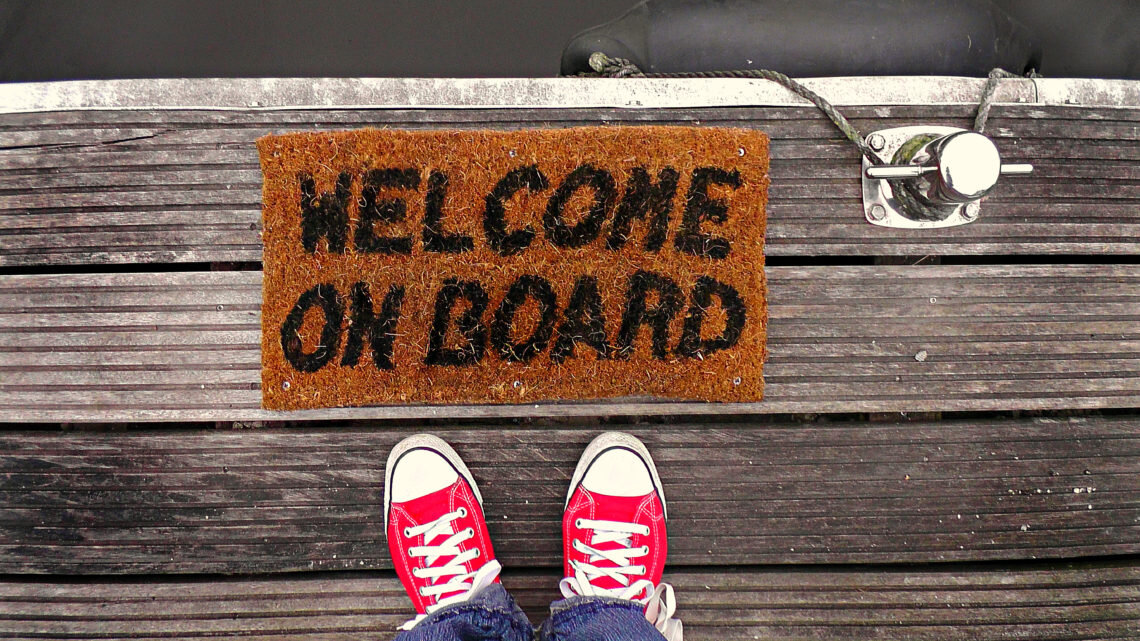Rough Sailing: Early VR + Boat = Just Say No
In my many years in various aspects of the tech industry, I have acquired an interesting job history with many jumps, lateral moves, and seemingly odd decisions – all of which made perfect sense at the time. My work history is a patchwork of start-ups, independent stints, and corporate gigs as I chased exciting tech innovations and took wild chances on start-ups rather than plotting a steady and predictable career path.
Then there was that time I had a job interview on a boat. It was 2001 and a little start-up with an address in Marina del Rey, which turned out to be the founder’s boat, wanted me to come in for an interview. The whole team was there, along with champagne and strawberries, and they were enthusiastic about the skills and experience I could bring to the group. They courted me with prime snacks and a cruise around the harbor – which is how I found myself negotiating my position, in between profuse apologies, while the founder nonchalantly washed my champagne and strawberry vomit off the side of his boat.
Sometimes I remind myself that yes, that really happened.
The whole thing was surreal and embarrassing, but the opportunity to work on innovative VR tech was exciting. The company, VirtueArts, was working on a VR simulation of the International Space Station, using both inertial and absolute positional tracking inputs that my code translated into controls, allowing the user to virtually fly around the ISS. The plan was to use the system for training astronauts and gaming, and was shown at SigGraph Los Angeles in 2001.VirtueArts developed a system they called RADE, rapid application development environment, a toolkit for quickly building complex apps for particular VR functions. While I was working with them, I developed several plug-ins for motion tracking and a highly-optimized terrain rendering module, as well as particle systems and visual effects.
To develop the motion tracking system, I built a room-size position input system in my apartment, using an InterSense IS-900 and dozens of one-inch by five-foot ultrasonic emitter bars attached every few inches across the ceiling and down the walls of my office. Each of the emitters would click and interact with the receivers on the hand-held control units, allowing the VR system to read the controls and the user to virtually fly around like you were on a space ship. When the whole system was up and running, it sounded like being in the middle of a tree full of clicking spiders, which was a bit disconcerting for visitors.
In the nine months, I worked at VirtueArts, we created some really cool tech. Of course, there was the challenge of avoiding the weekly work sessions on the founder’s boat. I mean really, there’s no combination guaranteed to create motion sickness like early VR goggles with a narrow field of view, and high latency, combined with a docked boat doing the harbor-three-way-roll.
In the end, the start-up lost its funding when one of their primary backers lost his life in the World Trade Center on 9/11. That and the general collapse of the dot-com bubble at the end of 2001 was enough to sink the small but passionate start-up that used to wine and dine recruits with champagne, strawberries, and a vomit cruise. They continued on for a while after I left, but in the end they used a, “Hey we have this engine we’ve built that does all of these cool things,” sort of transaction and sold the tech we’d built off to someone else.
And I moved on to Reflexive Entertainment, where I’d eventually create Wik and the Fable of Souls.



